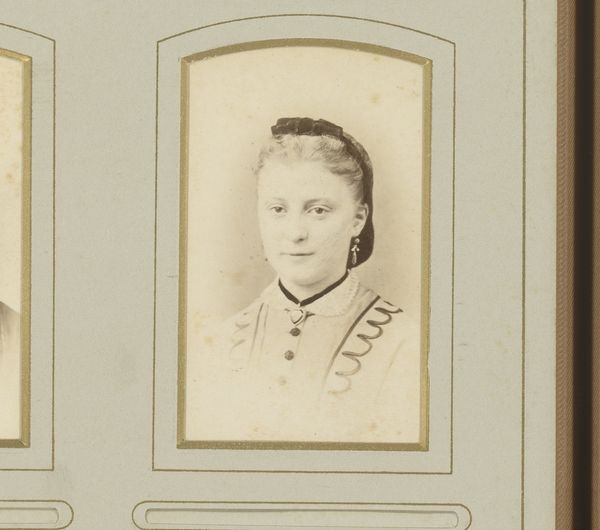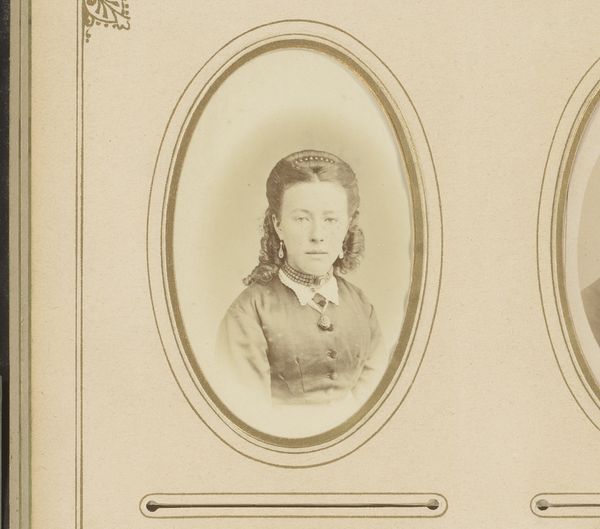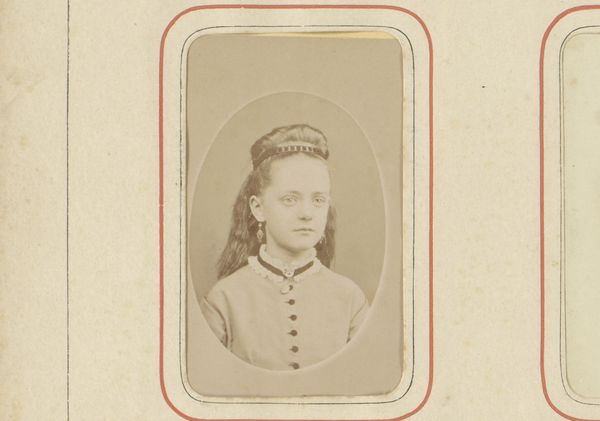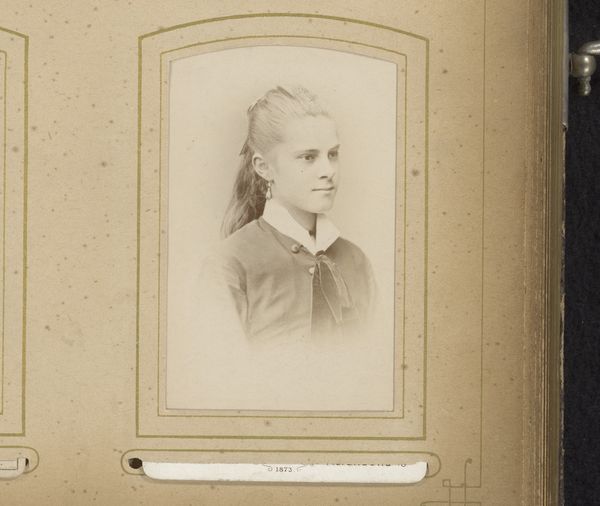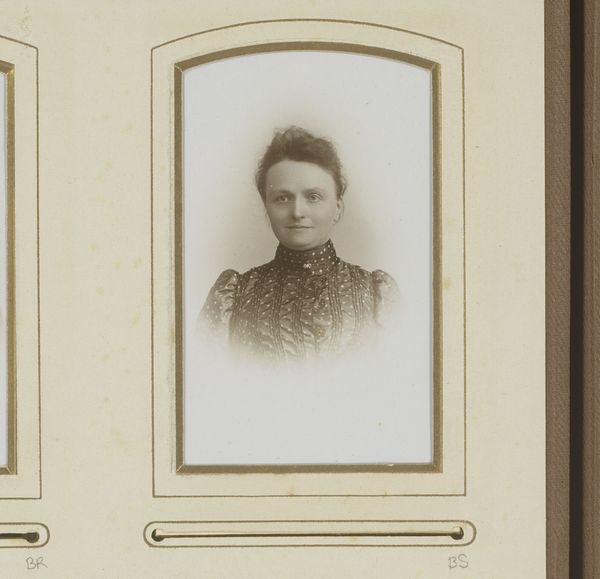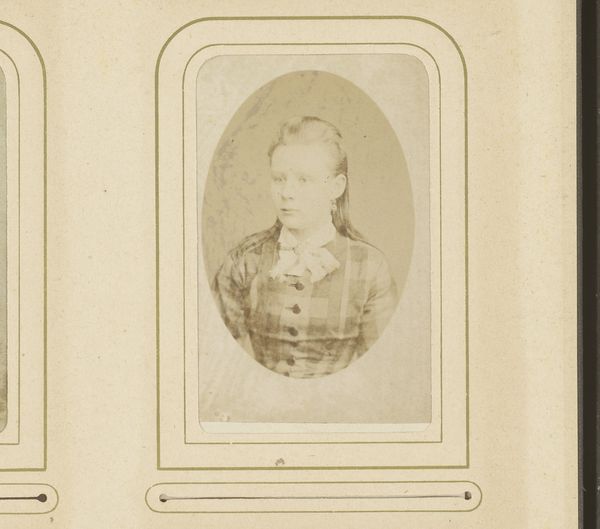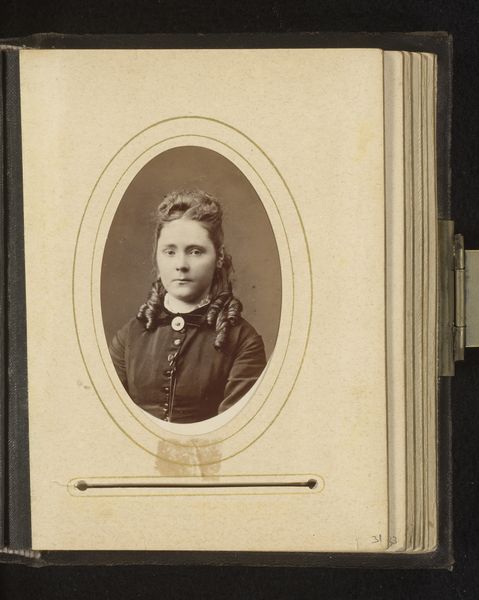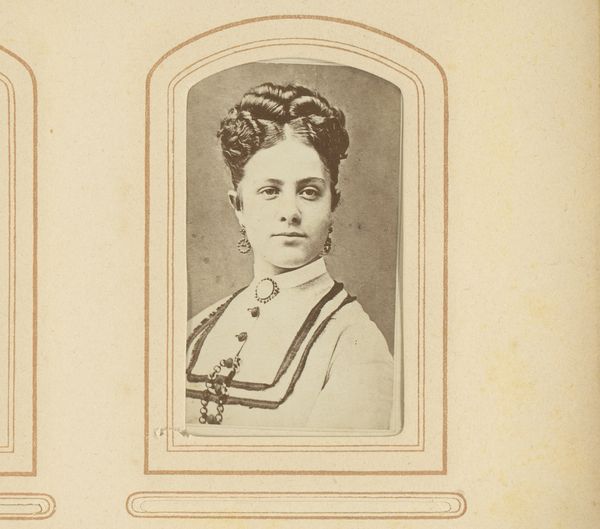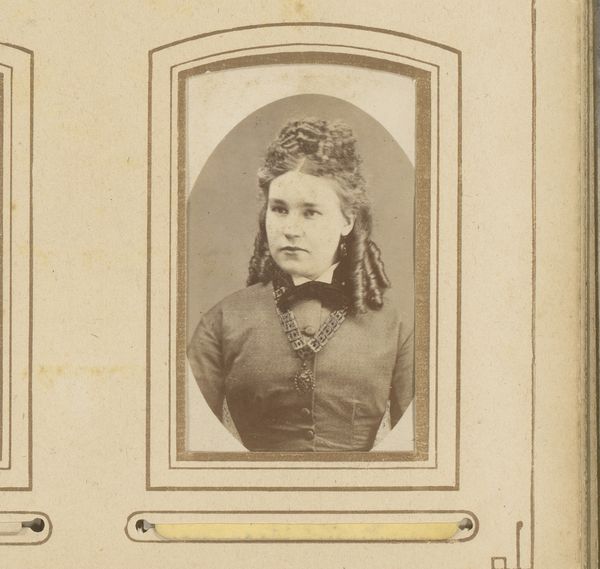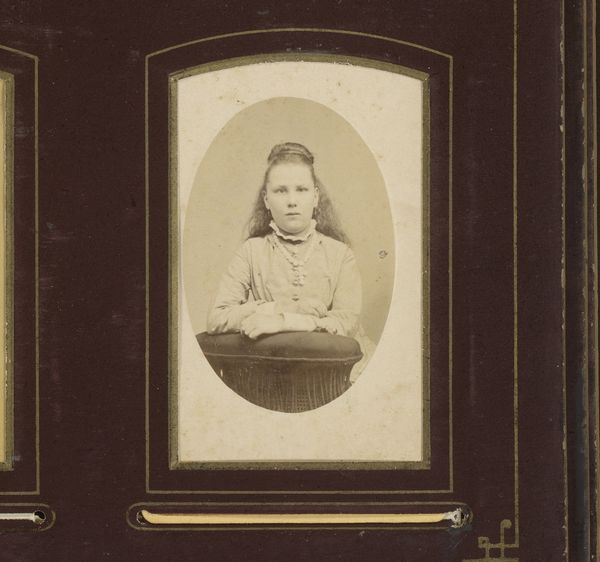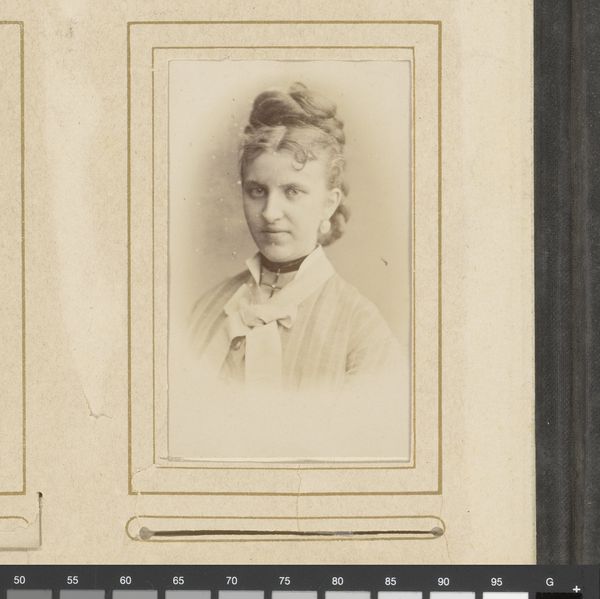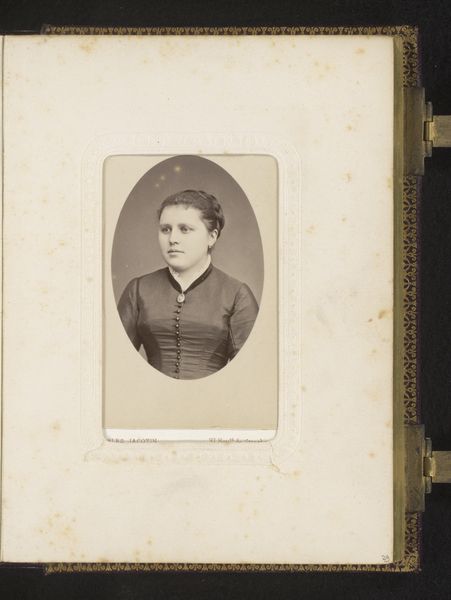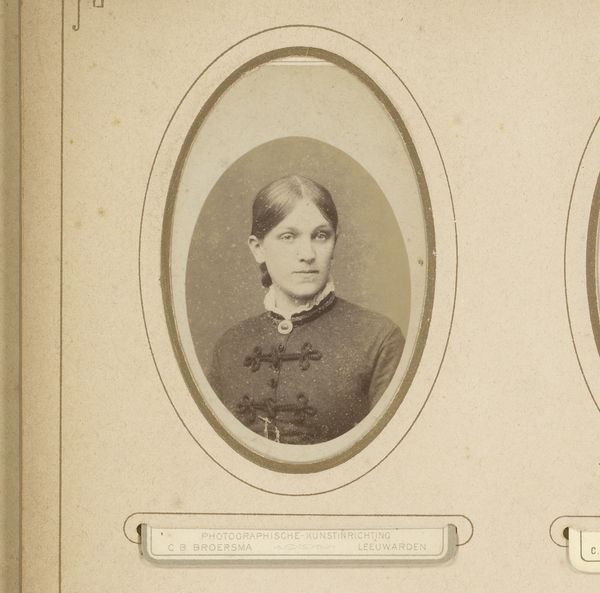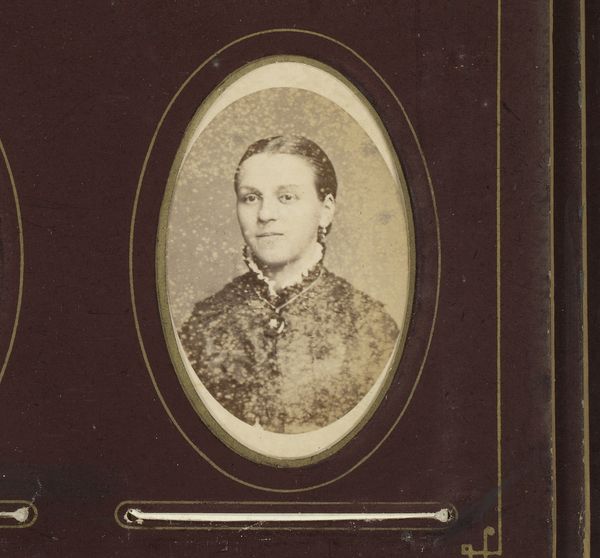
photography, albumen-print
#
portrait
#
photography
#
19th century
#
portrait drawing
#
albumen-print
#
realism
Dimensions: height 82 mm, width 50 mm
Copyright: Rijks Museum: Open Domain
Curator: This is "Portret van een Meisje," or "Portrait of a Girl," a photograph from the late 19th century, created sometime between 1870 and 1890, utilizing the albumen print technique. P. Vlaanderen & C. van der Aa are credited as the makers. Editor: It’s immediately striking how self-possessed she appears. There's a formality to the portrait, but the overall mood is almost melancholy. It feels introspective. Curator: Certainly. Photography in this era became more accessible, but portraiture remained a constructed performance. The dark dress, with its many buttons and high collar trimmed with lace, emphasizes the societal expectations placed on young women. Editor: And notice how the oval frame surrounding her image seems to subtly amplify her slightly elongated face and serious expression. Those chandelier earrings dangle like tiny pendulums, echoing a sense of suspended time and emotional gravity. The elaborate headband might be intended as decoration, but I see an allusion to constraints. Curator: You are right that photography studios had an interest in signaling both their skill and an implicit bourgeois social value. But they were also commercial ventures, trying to project a marketable, reproducible form of individuality through standardization. Editor: The buttons do present this interesting duality, don't they? While seemingly purely aesthetic, each repeated element subtly represents the strict codes regulating her status as a woman. Her ornate style embodies these implicit societal expectations. Curator: Indeed, her very posture, while appearing serene, also speaks volumes about the silent pressures exerted upon women to embody decorum and duty. Editor: It really allows us to perceive a sliver of her cultural life back then. Thanks for highlighting that history! Curator: My pleasure. I see this image as a social mirror—both reflecting and refracting our own historical perceptions and societal roles.
Comments
No comments
Be the first to comment and join the conversation on the ultimate creative platform.
